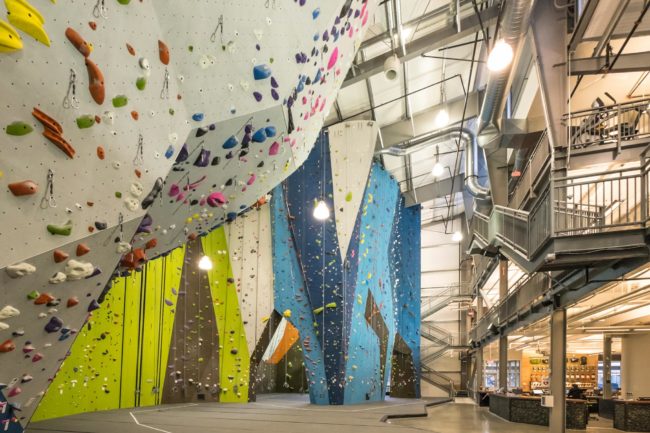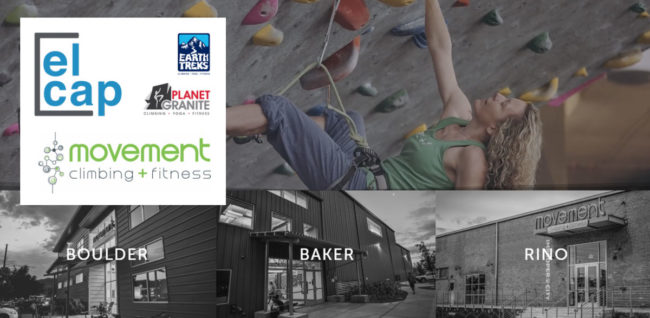
By Derek Larsen-Chaney and Jason Pill, Attorneys with Phelps Dunbar, LLP
Part 1 of CBJ’s series on corporate expansion surveyed some of the underlying reasons for expansion and identified external expansion as a costlier—but ultimately quicker—route for business growth than internal expansion. Part 2 takes a closer look at the main types of external expansion, exploring the pros and cons and providing industry examples of each option.
Merger
In a merger, two or more separate companies mutually agree to the formation of a new single company. Typically, the companies are similar in size and share common goals, including the goal of expansion. After the merger, the companies operate as a new entity and share ownership, profit, and control. Sometimes the new entity will have a new name, keep one of the company names, or take on a combination of the two. If one of the companies is more reputable, merging companies may choose to operate under this brand name. A climbing gym brand wanting to expand by means of a merger may seek out another like-minded and well-known gym chain.
Example: In 2018, the two popular climbing gym chains Earth Treks—based in Maryland—and Planet Granite—based in California—merged to form the parent company El Cap.

Pros: Combined resources of two (or more) established companies, often united in a friendly business environment. The merger should allow the new entity to gain an instant presence in a broader market or reduce competition in the same market. Ideally, the merger expands the footprint of the joint enterprise and results in more efficient and complementary gym operations.
Cons: Accepting the weaknesses of each company—debt, damaged reputation, etc. There may also be employee and location redundancies that need to be addressed post-merger.
Acquisition
An acquisition consists in the purchasing of one company by another company. The company that acquires the other company is known as the acquiring company, while the acquired company is considered the target company. The target company is almost always smaller in size, structure, finance and operations than the acquiring company. There are two forms of acquisition: acquiring ownership of over 51 percent of the target company’s share capital or purchasing all the assets of the target company. The former is less common in the climbing gym industry because few gyms (if any) have shares that can be bought or sold. A climbing gym wanting to expand by means of acquisition may consider purchasing all the assets of a smaller gym or smaller chain of gyms.
Example: In 2019, El Cap acquired the Movement Climbing and Fitness gym chain in Colorado, extending the El Cap network to 16 climbing gyms and 4 million patrons annually.

Pros: Similar to a merger, the goal of an acquisition is to combine resources and expedite growth. In an asset purchase, the acquiring company may be able to pick and acquire only the more attractive assets of the target company and exclude assumption of some or all liabilities.
Cons: An acquisition is not always a friendly procedure, can be extremely expensive (including costly legal fees) and entails managerial risks for the acquiring company. It’s also difficult to avoid assuming some liabilities of the target company since the sellers will want or need to satisfy debts before relinquishing control. In addition, there may be a premium to be paid based on the “enterprise value” or “goodwill” associated with the target company. In the worst-case scenario, a backlash can ensue by the loyal clientele of the target company.
Partnership
Partnerships can be like mergers but do not always entail the combining of two or more companies. A gym that wants to expand but does not have the financial status to do so may seek private partners to assist in the funding of their expansion vision. In addition to financial assistance, outside partners can also help promote and market the expansion. Pursuing external expansion through partnerships is not uncommon in the climbing gym industry.
Example: Before merging with Planet Granite, in 2017 Earth Treks partnered with Tengram Capital Partners—a private equity firm that specializes in consumer brands—to open new climbing gyms in Earth Treks’ existing markets and expand into new ones.

Pros: For new and emerging businesses, institutional sources of financing may be hard to come by. Taking on private partners, whether they are actively involved in the business or passive investors, is often the easiest way to raise capital and diminish personal risk.
Cons: The term partnership does not always mean together. Private partners tend to be a lot like private lenders—some expect to receive a large percentage share in revenue made, while others contract based off credit and interest. Partnerships can also lead to a significant reduction in the control an owner has in his or her business and, unfortunately, partners who were initially aligned do not always stay aligned. There may be a need to allow or force a partner out of the picture and that can be costly, even in the best circumstances.
Franchise
Franchising is a separate form of external expansion that enables a business’s brand to be publicized broadly. Franchising involves the right to use a company’s brand and business model for a set period of time. The franchisee pays the franchisor to use its brand and the franchisor’s success depends on the success of the franchisee and his/her application of the business model. Given the unique nature of climbing gyms, the franchise model has not been common in the US.
Example: In 2014, the Gravity Vault in Middletown, New Jersey, became the first franchised climbing gym in the US when it opened. Gravity Vault has since expanded to nine locations, with four more climbing gyms coming soon to New Jersey, New York and Pennsylvania.

Pros: Franchise benefits include instant name recognition and established “back office” infrastructure. Typically, the payment of franchise fees and royalties entitles the franchisee to—among other things—accounting, payroll, and benefits help, which can be otherwise burdensome to put in place. When franchisees succeed, franchisors can avoid the liability of a chain and the burdens of investments while enjoying the success of its brand expanding into new regions and territories, thus opening new market opportunities and sales channels. The franchisee also has a greater incentive than a direct employee because they, too, have a stake in the business.
Cons: Franchising only works if there is preexisting demand, an established customer community in a given location, and guaranteed profitability for both the franchisor and the franchisee. If a franchisee fails, it impacts the reputation of all businesses under the brand name. Franchising is very challenging in the climbing world because most gyms are defined by the unique experiences they provide customers (such as the quality of routes, shapes of the walls, unique layout and assortment of educational programs) and are not easily replicated when compared to a cookie-cutter fast-food restaurant or clothing store. Bringing in new owners (especially those without climbing expertise) can create differences in customer experiences at different gym locations, and these differences can dilute or devalue the brand. Additionally, franchise agreements require strict compliance with the franchisor’s operational guidelines, which may limit the franchisee’s ability to run the gym the way he or she desires.
Note: The content of this article is for informational purposes only and not for the purpose of providing legal advice. You should contact an attorney to obtain advice with respect to any particular issue or problem. The reading of or reliance on this article or the Climbing Business Journal’s web site does not create an attorney-client relationship between the author or the Climbing Business Journal and the user or reader.

Derek Larsen-Chaney is an attorney with Phelps Dunbar, LLP in Tampa, Florida. Derek practices in the areas of business and finance with a focus on real estate transactions, commercial lending, and corporate formation, including start-up business and climbing gyms. Derek has also provided guidance to startup companies in secured financing, private placement fundraising, and SEC reporting obligations.
 Jason Pill is a longtime climber and an attorney with Phelps Dunbar, LLP in Tampa, Florida. He practices in the area of Employment Law by advising clients, including climbing gyms, on workplace issues and representing clients in state and federal court when litigation becomes unavoidable. Additionally, Jason managed a climbing gym before embarking on a legal career, and he currently serves on USA Climbing’s Board of Directors and as the Chairperson of USA Climbing’s Ethics Committee.
Jason Pill is a longtime climber and an attorney with Phelps Dunbar, LLP in Tampa, Florida. He practices in the area of Employment Law by advising clients, including climbing gyms, on workplace issues and representing clients in state and federal court when litigation becomes unavoidable. Additionally, Jason managed a climbing gym before embarking on a legal career, and he currently serves on USA Climbing’s Board of Directors and as the Chairperson of USA Climbing’s Ethics Committee.









